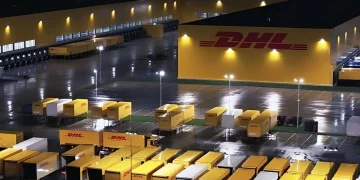DHL Global Forwarding has expanded its facilities in Vietnam, adding more space to its freight stations in Ho Chi Minh City and Haiphong. On papier, it looks like a standard upgrade. But anyone watching Asia’s logistics landscape knows this move says a lot more about where global trade is heading.
The site in Ho Chi Minh City has grown to nearly 6,800 square meters, while Haiphong now offers around 4,000 square meters. Both locations include bonded and non-bonded areas, which gives exporters and importers more room to work around Vietnam’s sometimes unpredictable customs timelines. It’s the type of flexibility companies have been asking for as volumes rise faster than infrastructure can follow.
Vietnam’s rise didn’t happen overnight. Over the past few years, the country has become one of the main beneficiaries of shifting supply chains. Factories producing electronics, garments, furniture, and even certain machinery have poured into the country as companies try to diversify away from heavy dependence on China. That shift has created constant pressure on logistics providers — too many goods chasing not enough space.
DHL’s update comes at a moment when Vietnam is playing a different role than before. It’s no longer just a place where goods are assembled; it’s also becoming a hub where cargo is repacked, redirected, or prepared for re-export to Europe, the U.S., Japan, and the rest of Asia. The increase in Chinese exports into Vietnam — now among the top flows in the region — is a sign of how closely tied the two economies have become.
With the expanded facilities, DHL is trying to stay ahead of the curve: more warehousing capacity, more controlled processes, and digital tools to track every step. Companies shipping out of Vietnam want two things above all — reliability and speed — and the current pace of global trade doesn’t leave much room for error.
People working in the industry say this investment fits the larger trend: major forwarders are moving their assets to countries where supply chains are actively shifting. Vietnam sits at the center of that transition, and ignoring it would mean missing some of the most dynamic trade lanes of the decade.
For shippers, the message is simple:
more space, fewer bottlenecks, and better handling in a country that’s becoming essential to almost every global supply chain strategy.






















